SUNDAY JOINT, 5-14-2023: THE POWER AND SUPERPOWER OF DANE KEALOHA

Hey All,
Dane Kealoha of Hawaii has died at age 64, after a long fight with cancer that nobody outside of family and friends knew anything about. Social media jumped the gun, as usual. Last weekend, before I'd even replied to the first of many texts from many people alerting me that Dane had passed, I got an email from son Kelai Kealoha saying that "Dad is very sick" but not gone. Dane hung in there for another three days. Death rumors, I suppose, are not high on the list of pollutants flooding the information landscape, but Dane's case stood out, to me anyway, because apart from the surfing itself he never much wanted to grab and hold our attention in the first place.
Dane has been on my mind all week. Mostly from marveling, again, as I have for 45-plus years, at his satin-finished tuberiding performances at Backdoor and Off the Wall—or any other hollow wave, large or small, warm or cold, left or right. That should be his legacy. I hope it is. But I think history will remember Kealoha in part for the wrong reasons. Or not the wrong reasons, exactly, but for reasons that were long ago bent to fit a certain narrative about Dane.
Let's talk about the missed world title. He was runner-up to Mark Richards in 1980, but that one wasn't really even close. MR put a huge distance between himself and the field that year and ran away with it. In 1979, when Dane finished #4—that was the year. Old-timers, hearken back with me. This was the first, and maybe still best, down-to-the-wire pro tour showdown. In his third season as a pro (he'd finished #20 as a rookie and #9 the following year), Dane headed into the final event of the season, the World Cup, in what was basically a three-way tie for first, along with Cheyne Horan and Wayne Bartholomew. MR was a distinct 4th, but Richards himself knew his chances were pretty much nil. In big raw surf at Haleiwa, against Puerto Rico's Edwin Santos, an underdog if there ever was one, Dane paddled out for his opening heat and absolutely blew a huge homefield advantage, waited too long between waves, let Santos run the inside, and basically kicked the title away on poor tactics. Bartholomew and Horan did much the same, and Richards came from way back to win his first world title. (A second heartbreak, from a week earlier at the '79 Pipeline Masters: with five minutes left in the finals, Dane, having ridden all of his allotted 10 waves, proned to shore with a solid lead. From the beach he then watched as Larry Blair, with just a minute left, speared the best wave of the event, rode it perfectly, and took the win.)
Everybody thinks Dane was denied a world title in 1983, and we'll get into that below—1979, though, was the real missed opportunity.
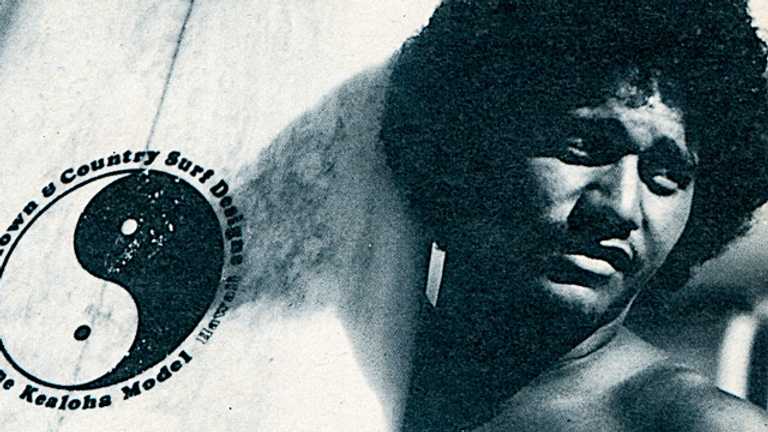
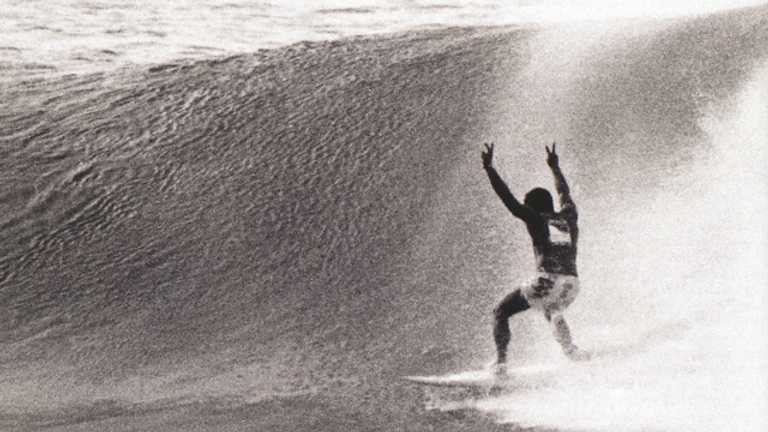
SURFER Magazine said in 1980 that, title or no title, "Dane Kealoha is doing the most advanced surfing of anybody in the world." That was Dane up there balanced at the tippy-top of the power surfer pyramid. He was built like, and moved like, Houston Oiler fullback Earl Campbell—whose eight-year pro career tracked with Kealoha's almost to the year. But it's a big mistake, I think, to call Dane a power surfer and leave it at that. Somebody online last week said Kealoha was the ultimate in "raw power," when in fact everything about the way he surfed, power element included, was the opposite of raw—Dane and Tom Curren were (and remain, for me anyway) our two most refined surfers. With Johnny-Boy Gomes, Dane's protege, power itself was the object, a shock mechanism, a flying mace, and it was thrilling to watch Gomes set off one flagrant, detonating turn after another. Dane, by contrast, could go all afternoon without any kind of Gomes-like demonstration of force. The power was simply there, always, foundational and evenly distributed, takeoff to kickout, a low-pitched elemental thrum. Dane knew what he had, owned it and at times obviously enjoyed it, but seemed to understand that the power was elevated for being kept in reserve. Related to what we're talking about here, and please forgive the 12-year time gap between the shots, but have a look at this Backdoor tube-exit claim-off between Gomes and Kealoha.
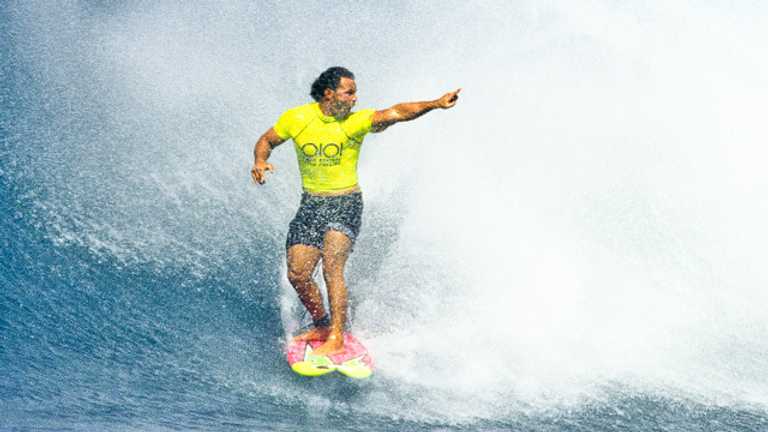
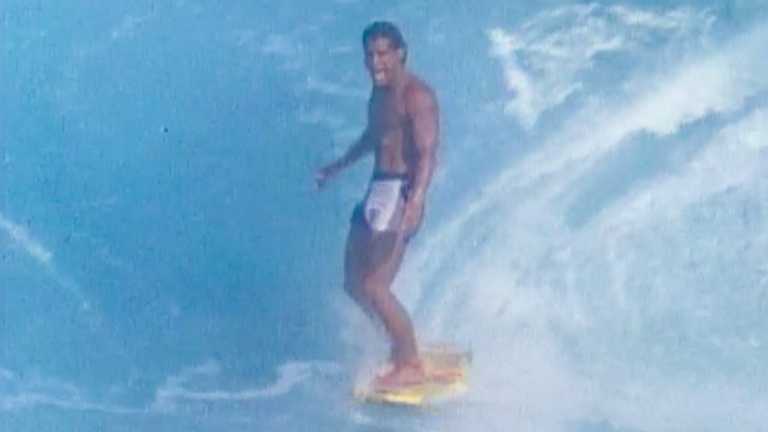
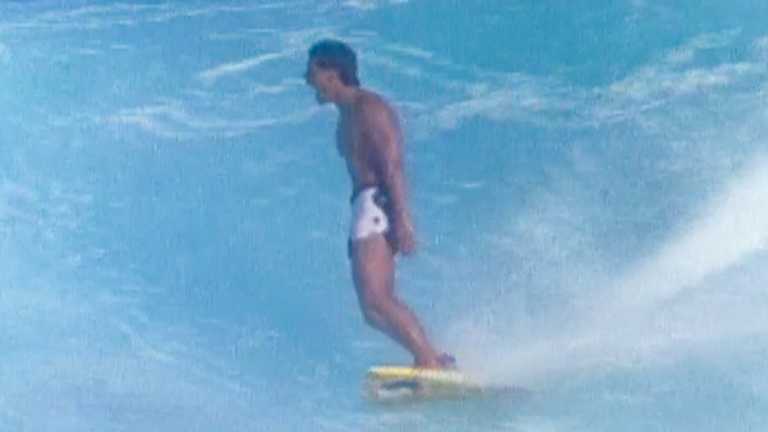
Built on top of that root-level strength was Dane Kealoha's actual and mostly-unmentioned superpower, which was flow and patience and finesse. There is a shot of Kealoha in the video I just posted doing 500 down-the-line pump turns on a small peeler at Burleigh Heads, so the man could get busy when he wanted to. But move ahead to 3:15, that big wave at Honolua Bay, and watch how still and composed he is. To my eyes, Dane is exactly as powerful as the wave itself; they match each other; Kealoha's force, like that of a big gorgeous Honolua bowl, is mostly below the surface, quiet and smoothed out, up to and including Dane's gliding exit as the wave flattens out. His front arm alone makes me want to finally learn and understand ballet or modern dance or something, because everything I hold dear in terms of surfing style is somehow contained in Dane's fingers, arm, and shoulder.
This is why, jumping back to 1983 and the bit of world tour stupidity that ended Kealoha's competitive career, it makes no difference to me whatsoever that Dane didn't get a world title. His surfing, like that of Phil Edwards or Wayne Lynch or Dane Reynolds, exists independently and, I think, well above that of rating points and world titles.
Maybe Kealoha felt that way, too, but maybe not. He said, more than once, that pro surfing was mostly just a career, the thing that allowed him to stay in the water. He was intense during competition, sure, but that was likely a scare tactic, a mechanism to keep people at a distance—people he didn't know, anyway—rather than from any burning desire to win heats. He learned the game but was never especially tactical, or not like Shaun and Rabbit and MR anyway. That said, it's not hard to imagine Dane wanting to prove people wrong. Like Drew Kampion, for instance, who had this brief and insulting and arguably very brave conversation with Kealoha at the end of the 1980 North Shore contest season:
DREW: Well, you got into the final of the Duke and you got into the final at Pipe, too, so you're doing pretty well.
DANE: Nnnyeeahhh . . . . [laughs]
DREW: But you're not winning, huh?
DANE: [laughs]
DREW: Does it bum you out not to be winning contests over here?
DANE: Mmmm, I don't know. I don't really care if I win or not. I just go out and try. If I don't, I don't."
DREW: Maybe that's why you lose.

The world tour went to war with itself in 1983. Tour founder and Triple Crown owner Fred Hemmings was on one side. Ian Cairns and Op were on the other. Fred was the IPS. Cairns headed up the newly-formed ASP, and without getting too deep in the weeds, Ian won the war, the IPS crashed, but the Triple Crown—Fred's property—got caught in the middle, and basically it was decided, by Cairns and the new ASP board, that any top-ranked world tour pro who surfed in the 1983 Crown events would forego their all-important seeding for 1984. Most of the tour pros all complied—Dane did not, entered all three Crown contests, won the Pipeline Masters and the Duke back-to-back, and a few weeks later refused on principle to pay the bitter little $1,000 ASP-levied fine that would have allowed him to keep his seed for the next year.
And that was pretty much it for Dane's competitive career.
Kealoha would later say he was zeroing in on the 1983 world title at the time of the Triple Crown blow-up. But in truth he surfed in 11 of 13 tour events, got his full allotment of points that year despite the friction with Cairns and the ASP, and was #14 in the final ratings. He would have been a longshot contender, at best, in years to come—Tom Curren, Tom Carroll, Martin Potter, and other world tour newcomers were younger and better in the small beachbreak waves that were taking over the tour schedule.
At first, Dane himself seemed just irked by how the world tour had treated him, not devastated or defeated. "I’m not afraid of surfing the qualifying trials again," he told Sam George in early 1984. "I’ll do whatever they want." He then added, "The sport still has to grow a bit more [but], I think it’s going to be a great circuit."
Paul Holmes' 2022 Surfer's Journal profile on Kealoha paints a different and much sadder picture. "It really hurt me," he says of the break with the tour. "I hate talking about it. They tried stopping me in so many ways." This is where Kealoha, to my ears, drifts into something related to but removed from what actually happened in 1983. He was a victim of the IPS-ASP fight, yes, but not a target. Dane doesn't see it that way. "They didn't want me to have the title. They knew I would eventually snap. And they were right."
You couldn't tell from his surfing, which remained sharp, fast and powerful, but Kealoha went dark in the late 1980s and '90s. "Depression, disappointment, frustration, all that stuff," he told Holmes. "I was racist. Anybody who wasn't from Hawaii didn't belong in the water when I was out. It got violent . . . and that hurt me even more. I'd go home and cry and drown myself with drugs. I was so depressed. It really broke my heart. I went down some pretty horrific roads that I'm still battling with."
And this, sadly, is where we last saw Dane. Holmes notes that Kealoha was living on Maui and "repeatedly managed to pull himself back from the brink." He found God, and for a period in the 2010s he was living in Honolulu, doing surf-therapy sessions for injured war vets and working with foster kids. The work didn't last, and he moved back to Maui. Reading between the lines, it sounds like Kealoha was estranged from at least part of his family.
"From his window," Holmes ends his article, "he sees clouds gathering."
We heard nothing else from Kealoha, publically, until his death notice this week.
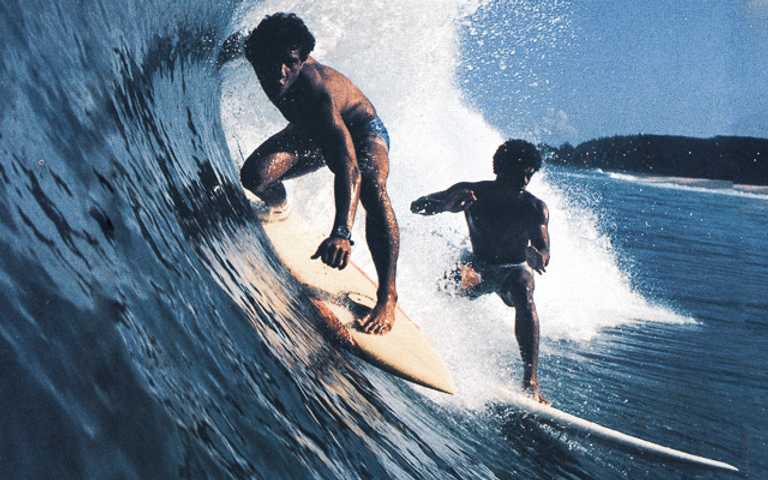
I hope over the past year or so Dane and his scattered family found some measure of peace and comfort. I also hope he spent a few idle moments remembering and reconnecting with a younger version of himself—there's a joyous bit in 1979's Many Classic Moments with a teenaged Dane day-tripping from Oahu to Maui with fellow sting-riders Buttons and Mark Liddell. By that point the surf world at large already knew Kealoha as quiet and glowering and basically unapproachable. But Moments shows another side, an earlier and I think maybe more authentic side, as he grins and surf-raps with his friends during the car ride to Honolua. Dane's famous glare is nowhere to be seen. The glare, I think, at least back then, was more a mask than anything. A great mask, something Dane was more than comfortable wearing, a device used to keep us away, to stay inside himself, to gain an advantage, take your pick. But here with Buttons and Liddell, Dane looks fully at home, literally and figuratively—powerful, but powerful and relaxed, both. People like Dane need a Buttons in their life. They rolled on to Honolua Bay, scored, and let's leave it there, in the afternoon light, with smiles and set waves for everybody.
Thanks for reading and see you next week.
Matt
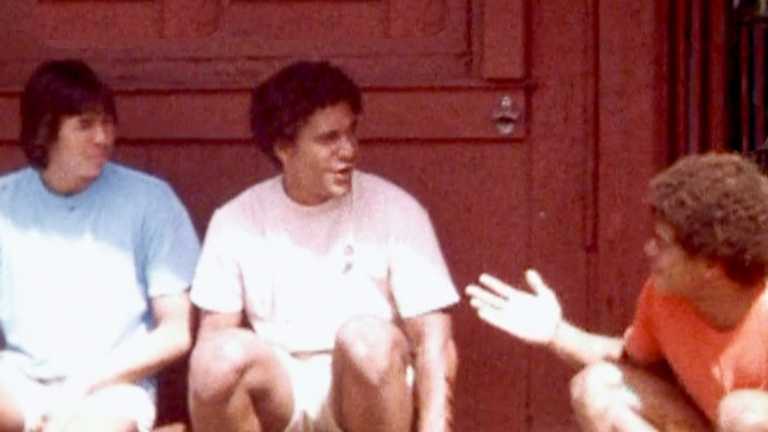
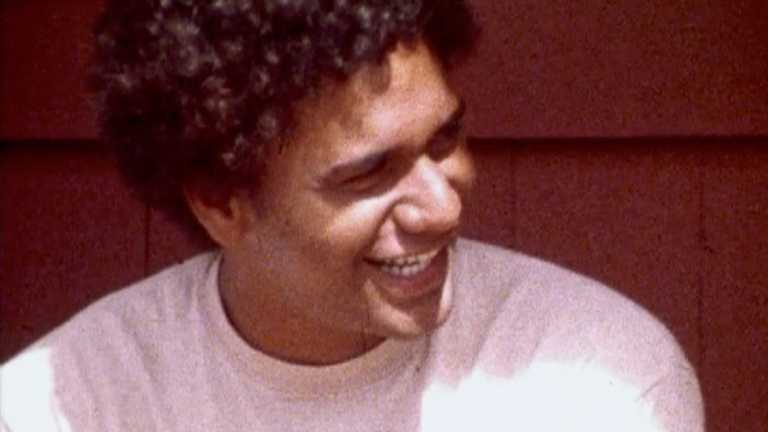
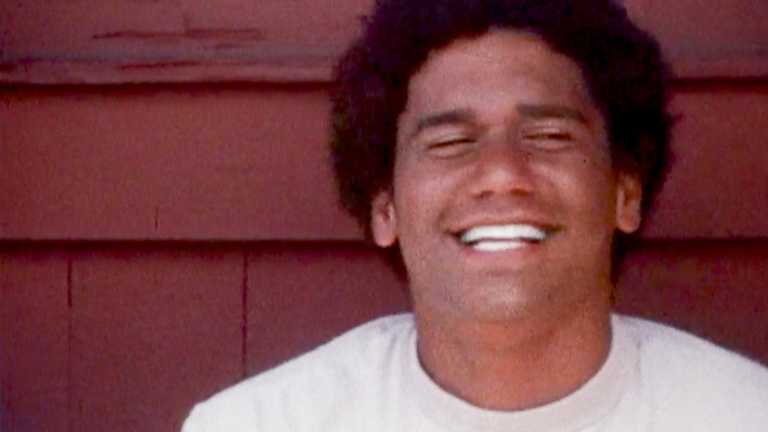
[Photo grid, clockwise from top left: Dane surfing Town, by Warren Bolster; portrait by Craig Fineman; framegrab of Dane with stinger by Gary Capo; Dane in O'Neill Wetsuits ad, early '80s; Dane surfing, by Bolster; runner-up at 1980 Stubbies Pro, by Peter Crawford. Backdoor photo by Jeff Divine. Portrait by Fineman. Gomes pic by Divine. Framegrabs of Dane by Scott Dittrich. Kealoha portrait by Jeff Hornbaker. Dane and Buttons at Off the Wall, 1980, by Dan Merkel. With Buttons and Mark Liddell, framegrabs from Many Classic Moments by Gary Capo]